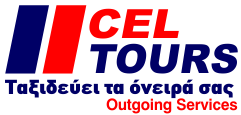Slovenia
Slovenia, officially the Republic of Slovenia is a country in the Balkans at the crossroads of key European cultural and trade routes. It borders with Austria to the north, Italy to the west, Hungary to the northeast, and Croatia to the south and southeast. In the west has a small coastline in the Adriatic Sea. It has a total area 20.273 sq.km.. and population 2.064.188 residents, according to official estimates 2016. It is a parliamentary democracy and a member of the European Union and NATO. As for geography, history, the economy, culture and language is a country with great variety, distinguishable from a transitional. Characterized by a high socioeconomic level. The capital and largest city is Ljubljana.
In Slovenia soil encountered four major European geographical units: the Alps, the Dinaric Alps, the Pannonian Plain and the Mediterranean Sea, with a shoreline small portion along the Adriatic Sea. To ground has a mosaic structure with a wide range landscape and biodiversity, result of the physical characteristics and long-term presence of people. Although the weather in hilly terrain mainly influenced by the continental climate, Slovenian coast favored by a sub-Mediterranean climate, while the Alpine climate is encountered in the northwestern part of the country. The country is one of the richest in Europe water, with dense river network, rich aquifer and significant karstic underground watercourses. More than half of the territory is covered by forests. H Slovenian habitation is dispersed and uneven.
Here we meet the Slavic, German, Romance and Finno-Ugric linguistic and cultural groups. Although the area is not homogeneous, predominant population is Slovenian. The Slovenian language is the only official across the country, while Italian and Hungarian are regional minority languages. H Slovenia is largely secular country, but culture and identity are significantly influenced by the Roman Catholic Church, as well as from Lutheranism. The Slovenian economy is small, open, export-oriented and therefore affected by international treaties. It has been severely affected by the European financial crisis, which began in late 2000. O chief economic sector is services, followed by industry and construction. Many Slovenes achieve top athletic performance, especially in winter sports, in aquatics, in alpinism and endurance sports.
Historically the current territory of Slovenia was part of many different state formations, like the Roman Empire, the Holy Roman Empire and then the Austro-Hungarian Empire. The 1918 Slovenes exercised self-determination for the first time, synidryontas non internationally disallowed State of Slovenes, Croats and Serbs, merged in Yugoslavia. In the Second World War, Slovenia was occupied and annexed to Germany, Italy, Croatia and Hungary. Then was a founding member of S.O.D. Yugoslavia. In June 1991, after the introduction of multiparty representative democracy, Slovenia seceded from Yugoslavia and became independent. December 1991 a new constitution was adopted, followed the 1992 from laws on denationalisation and privatization. The European Union recognized Slovenia as an independent state in 15 January 1992 and the UN accepted it as their registered 22 May 1992. Became member of the EU and NATO 2004 and from 2007 He is a member of the Eurozone. It was the first former Communist country that had the Presidency of the Council of the European Union, for the first half of 2008. At 21 July 2010 He joined the Organization for Economic Co-operation and Development.
30 years we now offer trips to unique destinations , for vacation , relaxation and wedding exotic trips , individual and group on economic prices!

